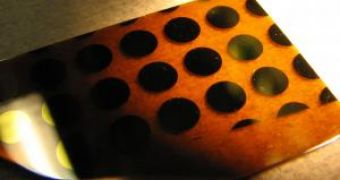Carbon dioxide is a chemical compound composed of one carbon and two oxygen atoms. It is often referred to by its formula, CO2. It is present in the Earth's atmosphere at a low concentration of approximately 0.04% and it's an important greenhouse gas. In its solid state, it is called dry ice. It is a major component of the carbon cycle.
Natural sources of atmospheric carbon dioxide include volcanic outgassing, the combustion of organic matter, and the respiration processes of living aerobic organisms; man-made sources of carbon dioxide come mainly from the burning of fossil fuels for heating, power generation and transport. It is also produced by various microorganisms from fermentation and cellular respiration. Plants convert carbon dioxide to carbohydrates during a process called photosynthesis. They produce the energy needed for this reaction through the photolysis of water. The resulting gas, oxygen, is released into the atmosphere by plants, which is subsequently used for respiration by heterotrophic organisms, forming a cycle.
Man-made CO2 is responsible for most of global warming and environmental problems. A single large SUV is estimated to blow out more than 100 tons of the gas over its life time and contribute to significantly to global warming. While especially car manufacturers look for ways to reduce CO2 emissions in future vehicles, scientists went the other way and claim they have found a way to actually use CO2 as a renewable energy source.
Now chemists at the University of California, San Diego said that they have built and demonstrated a prototype device that can capture energy from the sun, convert it to electrical energy and "split" carbon dioxide into carbon monoxide (CO) and oxygen.
The "device" is still deep into the research phase, as the scientists said they still need additional energy for the process to work. But the approach looks promising and considering today's fuel prices as well as environmental concerns, the idea is likely to get a lot of attention.
For every mention of CO2 splitting, there are more than 100 articles on splitting water to produce hydrogen, yet CO2 splitting uses up more of what you want to put a dent into," said Clifford Kubiak, professor of chemistry and biochemistry UCSD. "It also produces CO, an important industrial chemical, which is normally produced from natural gas. So with CO2 splitting you can save fuel, produce a useful chemical and reduce a greenhouse gas."
According to Kubiak and his graduate student Aaron Sathrum, the process to split carbon dioxide utilizes a semiconductor and two thin layers of catalysts. It splits carbon dioxide to generate carbon monoxide and oxygen in a three-step process. First, solar energy photons are captured by the semiconductor; next, optical energy is converted into electrical energy by the chip. During the third step, electrical energy is provided to the catalysts. The catalysts then convert carbon dioxide to carbon monoxide on one side of the device and to oxygen on the other side.
Kubiak and Sathrum used a silicon semiconductor to test their device because of the broad knowledge of silicon characteristics. However, they consider silicon as "too wimpy" as it cannot supply enough energy to split carbon dioxide in efficient applications.
The team is now building a new device using a gallium-phosphide semiconductor, which is described to have twice the band gap of silicon and absorbs more energetic visible light than silicon can. Kubiak and Sathrum believe that this material will we enable the creation of enough energy to drive the catalytic splitting of carbon dioxide.

 14 DAY TRIAL //
14 DAY TRIAL //